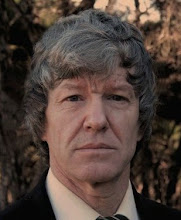Worldwide, 2011 was the coolest year on record since 2008, yet temperatures remained above the 30-year average, according to the 2011 State of the Climate report released online on July 10, 2012 by NOAA. The peer-reviewed report, issued in coordination with the American Meteorological Society (AMS), was compiled by 378 scientists from 48 countries around the world. It was reported on ScienceDaily.
The Arctic continued to show more rapid changes than the rest of the planet. Sea-ice shrank to its second smallest 'summer minimum' extent on record during 2011, as older ice (four to five years old) reached a new record minimum at more than 80% below average. Overall, glaciers around the world continued to lose mass. Loss from Canadian Arctic glaciers and ice caps were the greatest since measurements began in 2002.
The report used forty-three climate-indicators to track and identify changes and overall trends to the global climate system, including greenhouse gas concentrations, temperature of the lower and upper atmosphere, cloud cover, sea-surface temperature, sea-level rise, ocean salinity, sea-ice extent and snow cover. Each indicator includes thousands of measurements from multiple independent datasets.
Four independent datasets show 2011 among the 15 warmest since records began in the late 19th century, with annually-averaged temperatures above the 1981-2010 average. The Arctic continued to warm at about twice the rate compared with lower latitudes. On the opposite pole, the South Pole station recorded its all-time highest temperature of -22.1°C (9.9°F) on December 25, breaking the previous record by over 1 degree Celsius (over 2 degrees Fahrenheit).
Major greenhouse gas concentrations, including carbon dioxide, methane, and nitrous oxide, continued to rise. Carbon dioxide steadily increased in 2011 and the yearly global average exceeded 390 parts per million (ppm) for the first time since instrumental records began.
The extent of Arctic sea-ice was below average for all of 2011 and has been since June 2001, a span of 127 consecutive months.
The ozone-level over the Arctic was the lowest since records began in 1979.
Even with La Niña conditions occurring during most of the year, the 2011 global sea-surface temperature was among the twelve highest years on record. Ocean heat content, measured from the surface to 700 metres deep (2,300 feet), continued to rise since records began in 1993 and was a record high.
La Niña-related heat waves, like that experienced in Texas in 2011, are now twenty times more likely to occur during La Niña years today than La Niña years fifty years ago.
The UK experienced a very warm November 2011 and a very cold December 2010. In analyzing these two very different events, UK scientists uncovered interesting changes in the odds. Cold Decembers are now half as likely to occur now versus fifty years ago, whereas warm Novembers are now sixty-two times more likely.




